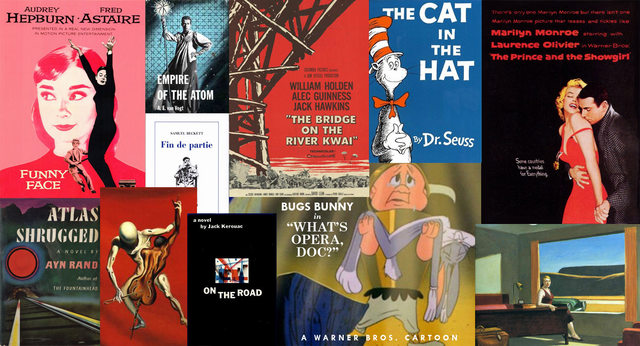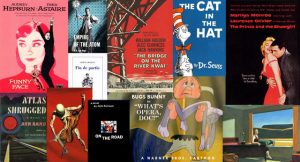
The Power of Innovative Storytelling in Consumer Marketing (Joy Steinberg)
 Storytelling is a hot topic from academia to advertising and virtually everywhere in between. The concept and evolution of storytelling has roots dating back to prehistoric times with cave art illustrating stories. The famous cave of Lascaux in France contains cave art estimated to be up to 20,000 years old.
Storytelling is a hot topic from academia to advertising and virtually everywhere in between. The concept and evolution of storytelling has roots dating back to prehistoric times with cave art illustrating stories. The famous cave of Lascaux in France contains cave art estimated to be up to 20,000 years old.
Storytelling as a form of communication, data sharing and influence has skyrocketed in popularity driven by our influx of data and seemingly ever-increasing scarcity of time. Currently people are viewing content on smaller screens and are often times multi-tasking. According to a study from Microsoft Corporation and reported in a Time magazine article from 2015, people now generally lose concentration after 8 seconds, compared to the average attention span for the notorious ill-focused goldfish which is 9 seconds. This comparison highlights the unfortunate effects of an increasingly digitalized lifestyle on the brain. For this reason, storytelling and persuasive content is needed now more than ever to capture the attention of your audience. This piece will cover three main facets of innovative storytelling:
- External: Consumer-facing marketing case study examples featuring innovative storytelling approaches
- Internal: Business stakeholder-facing use cases demonstrating storytelling applications to drive decision-making within organizations
- Tools and Techniques: An overview of emerging digital tools and research techniques used to help businesses guide storytelling curation and execution
The power of innovative storytelling has been proven and embraced by thought leaders in various segments of business, philanthropy, culture and politics. Below are synopses from four influential case studies: 1) Under Armour – I will what I want, 2) British Airways North America – Visit Mum, 3) Vancouver Opera – the monster in all of us, and 4) charity: water Fundraising Gala at Metropolitan Museum of Art.
 Under Armour: I will what I want.
Under Armour: I will what I want.
While momentum in women’s sportswear business was thriving, Under Armour was struggling to capture market share. Focused on better connecting with female consumer athletes, Under Armour crafted the I Will What I Want campaign featuring personal stories of challenge and triumph from ‘non-traditional’ female athlete role models such as ballet dancer Misty Copeland and model Giselle Bunchen.
Their goal-oriented focus and athletic prowess was illuminated via digital video and supported by a fully integrated campaign (including TV, a live web experience, online videos). The compelling, story-based ads generated a combined 10 million views, resulting in 5 million media impressions which is the equivalent of $14 million in earned media. NOTE: These results were generated through Warc.com. Warc.com is an online service offering advertising best practice, evidence and insights from the world’s leading brands. Warc helps clients grow their businesses by using proven approaches to maximise advertising effectiveness.
 British Airways – Visit Mum
British Airways – Visit Mum
In North America, British Airways had been largely associated with itineraries ending in London which left the significantly larger revenue opportunity of ‘double-long-haul routes’ to India largely untapped. British Airways needed to reframe this relationship and show empathy for their new desired audience – especially given the historical relations between the two countries and the airline’s association with Britain’s colonial past.
From this challenge, the Visit Mum campaign was born which focused on telling individual stories about bringing Indian families together across continents in an emotional and authentic manner. The upshot was that BA.com direct sales increased by 65% in 2015 vs. 2012, indirect sales grew by 75% and British Airway gained 3.3% market share.
 Vancouver Opera – There’s a monster in all of us. Faced with an aging audience, the Vancouver Opera wanted to appeal to a younger and more contemporary demographic. They did so with storytelling – quite literally, by developing a new work, Stickboy. This narrative travelled the landscape of the very timely and emotional topic, bullying, through opera. The opera crafted marketing strategy, leveraging non-traditional tactics, including graffiti-like ‘signage’ and an online mural Tumblr page of this ‘graffiti’ promotional artwork and posters.
Vancouver Opera – There’s a monster in all of us. Faced with an aging audience, the Vancouver Opera wanted to appeal to a younger and more contemporary demographic. They did so with storytelling – quite literally, by developing a new work, Stickboy. This narrative travelled the landscape of the very timely and emotional topic, bullying, through opera. The opera crafted marketing strategy, leveraging non-traditional tactics, including graffiti-like ‘signage’ and an online mural Tumblr page of this ‘graffiti’ promotional artwork and posters.
This unexpected way of leveraging the art and impact of opera to speak to a current cultural issue inspired conversations and captivated audiences. The results? A more than 300% increase in social conversations vs. prior VO shows, 200%+ increase in ticket sales.
 Charity: Water – Metropolitan Museum of Art Fundraising Gala
Charity: Water – Metropolitan Museum of Art Fundraising Gala
Charity: Water was not afraid to vary from the traditional practices of fundraising when they provided their refined, black-tie dinner guests with Samsung Gear VR headsets enabling them to watch a virtual reality movie documenting a week in the life of a 13-year-old girl, Selam, and her family who were getting clean water for the first time. One donor was so moved by the story, he increased his support by nearly seven times from his prior commitment of $60,000 to $400,000 – driven by power of authentic and evocative storytelling.
The AdWeek piece ‘How Virtual Reality is Inspiring Donors to Dig Deep for Charitable Causes” provides additional richness and detail to this innovative approach in the philanthropic world. Outcome: In surpassing event expectations, donors committed that evening to giving $2.4 million.
Internal Application Examples
While the previous case studies show external applications and impacts of storytelling, this topic also has far reaching implications inside organizations. This is illuminated in the March 2016 Forbes piece “Data Storytelling: The Essential Data Science Skill Everyone Needs” with a quote from Google’s Chief Economist Dr. Hal R. Varian where he stated “The ability to take data—to be able to understand it, to process it, to extract value from it, to visualize it, to communicate it—that’s going to be a hugely important skill in the next decades.” While his statement dates back to 2009, many businesses would agree with Varian’s astute assessment in 2016.
Lowe’s Innovation Lab offers another unique and daring example of leveraging storytelling for impact and influence within an organization. Kyle Nel, Executive Director of Lowe’s Innovation Lab, is a leader in the storytelling and disruptive innovation spaces. Envision a meeting of Lowe’s Home Improvement senior executives reviewing presentation in science fiction comic book format. It may seem outlandish, but it’s true and it was a success. His team was able to share data and recommendations in a compelling and persuasive format.
Nel and the Innovation Lab continue to break ground in new territories such as ‘holorooms’ in many Lowe’s brick and mortar locations and their partnership with NASA to print 3D tools in space, due in part to their ability to communicate data and recommendations in a compelling way.
Digital Tools and Research Techniques
Business and the Market Research industry have responded to the continued rise in digital and evolution of consumer behavior with new business models, research methods and digital technologies. Some key methods and technologies to support this evolved form of storytelling include: Online Qualitative Research, Mobile Market Research, and Video Ethnography. An overview and supporting examples are provided below:
Online Qualitative Research.
Leveraging best practices from traditional in-person qualitative research, online studies are now frequently conducted in several formats including: online bulletin boards, live webcam interviews or groups, and on-going consumer communities. Leading global businesses are placing increasing emphasis on these approaches which enable them to become more closely connected with consumers in an agile and cost-efficient way.
Unilever Ventures investment in Discuss.io, a Seattle-based technology startup offering a webcam focus group platform, is a recent example of this vote of confidence.
“A deep and personal understanding of the people it serves is a core component of Unilever’s DNA. Over the last year, Discuss.io has achieved significant impact on Unilever’s consumer closeness in local markets.
Global research studies that used to take months now take days”
– Keith Weed, Unilever Chief Marketing Officer.
Unilever’s Consumer and Market Insights (CMI) team uses this “always-on” platform to arrange virtual meetings with consumers around the world to inform business decisions and leverage the consumer voice for storytelling. The Harvard Business Review article, Building an Insights Engine, featured this partnership and consumer-centric approach.
- Mobile Market Research: The prevalence of mobile in virtually all aspects of daily life is the driver of this new innovation and research method. Mobile market research is currently used by leading CPG firms, retailers, agencies, restaurants and academics for multiple types analysis. In addition to the innovation in technology, the recruitment method is also expanding and evolving. An example of this disruptive innovation is Field Agent’s use of crowdsourcing for mobile audits and consumer research to inform business decisions with partners including Johnson & Johnson, Nestle and Procter & Gamble.
- Video Ethnography: Commonly defined as the ability to observe in situ or interview a consumer or consumer segment around the world on video. fNograph, a video ethnography startup developed at the Harvard Innovation Lab, was created based on their belief that video can enhance understanding of consumers in a meaningful and agile way. To date, they’ve partnered with global organizations and Fortune 100 companies such as Adidas, Coca-Cola, NBC Universal and The United Nations.
To conclude, while storytelling has its’ roots in ancient history and culture – the definition and potential for storytelling continues to expand and evolve with cultural trends and digital innovations. In a sense, we’ve simply transitioned from cave walls to the digital era of flat screens, smartphones and wearable tech. To adapt to the ever-changing digital and social landscape, it is imperative that academics and entrepreneurs continue to stay focused on evolving and improving the way a compelling story is captured and shared.
Joy Steinberg is the founder and President of JSI Marketing, a boutique consultancy focused on qualitative research and Digital/Social Insights. Her rich client-side perspective is based upon experience with multi-national organizations such as The Clorox Company and Mary Kay, Inc. In addition, graduate training in International Relations with an emphasis on International Business (University of Texas – Dallas) with a B.A. in Interdisciplinary Studies and Marketing Communications (University of Wisconsin – Madison) has helped her to regard global business problems and opportunities from a well-rounded perspective. She is an innovative and visionary leader with extensive experience and proven ability to strategically plan and implement tactics leveraging agile and creative research approaches. Her scope of insights experience includes: ethnography studies/observational research (residential and shop-alongs), user experience testing , new product development, brand image and positioning, advertising testing, package design/graphics evaluation, social media listening analysis, market research on-line community management, and digital habits and practices.
Tagged with: advertising, Armour, British Airways, fundraising, Microsoft, storytelling
